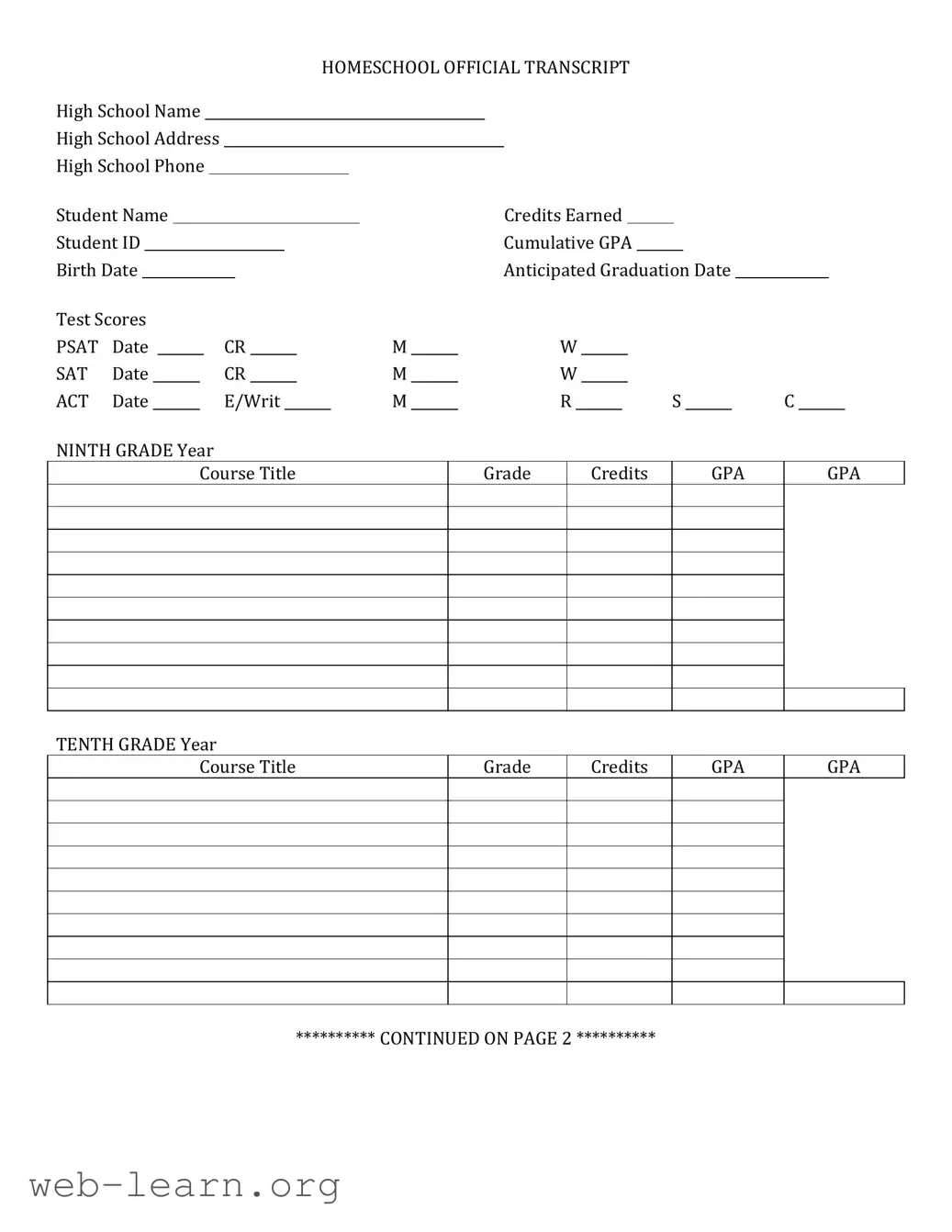Completing a High School Transcript form is an important task that can significantly impact a student’s future academic opportunities. However, several common mistakes can arise during this process. Recognizing and avoiding these errors is essential to ensure accurate representation of a student's academic history.
One frequent mistake is omitting required information. Students may forget to include important details such as the names of classes, grades, or the cumulative GPA. Each detail is crucial since it provides a comprehensive view of the student’s academic performance.
Another error often made is using incorrect formatting. Many transcripts require information to be presented in a specific way. For instance, failing to follow guidelines for listing courses or grades can lead to confusion and may result in the form being rejected or requiring resubmission.
Some individuals also struggle with inconsistent naming conventions. This occurs when students use different names for the same course across various documents. For example, if one semester is recorded as "Biology I" and another as "Intro to Biology," it creates inconsistency. Maintaining uniformity is vital for clarity and accuracy.
Additionally, neglecting to proofread the form is a common oversight. Spelling errors, grammatical mistakes, or miscalculated grades can detract from the professionalism of the transcript. A careful review can help catch these simple yet impactful errors before submission.
Furthermore, students may make the mistake of waiting until the last minute to complete the form. Procrastination can lead to rushed submissions where mistakes are more likely to occur. It is advisable to start early, allowing ample time for reflection and revision.
Another point to consider is not double-checking institutional requirements. Different colleges or organizations may have specific transcript requirements or formats. Failing to adhere to these standards can complicate the application process and may impact the student’s options.
Lastly, forgetting to seek assistance can be a significant mistake. Students should not hesitate to ask teachers or school counselors for guidance. Their insights can help clarify the process and ensure all information is accurately captured.


